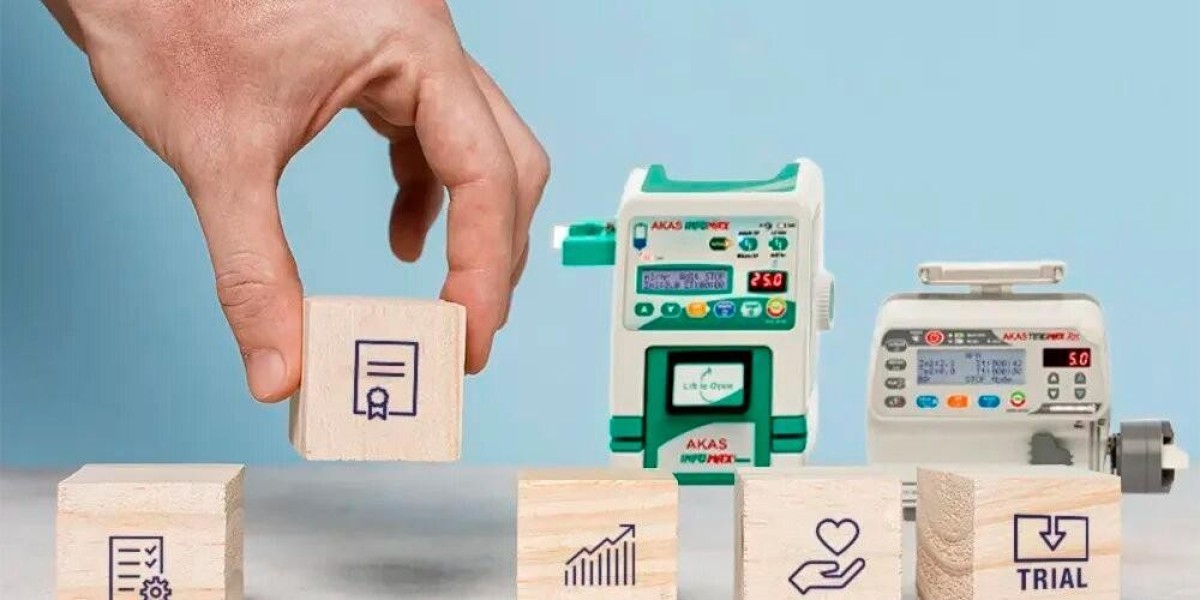Medication errors remain one of the leading causes of preventable harm in healthcare settings. From incorrect dosage delivery to misprogrammed infusion rates, even small slip-ups can carry serious consequences. Hospitals are now embracing advanced technologies such as smart infusion pumps to enhance patient safety, streamline workflows, and reduce the risk of human error.
Smart infusion pump systems combine automation, data integration, and clinical safeguards to transform how intravenous medications are delivered. They allow hospitals to improve care delivery while maintaining stringent safety protocols across departments.
What Makes an Infusion Pump "Smart"?
Automated Dose Calculation with Drug Libraries
These pumps come with built-in medication libraries that ensure accurate dosing based on drug name, concentration, and patient weight.Real-Time Alerts and Alarms for Safety Checks
Devices notify clinicians if a programmed dosage exceeds recommended limits or if there is a blockage or air in the line.Wireless Connectivity with EMR Integration
Smart infusion pumps can sync with hospital Electronic Medical Records (EMR), reducing manual data entry and improving documentation accuracy.Barcode Scanning for Patient and Medication Verification
Scanning the patient ID and medication vial reduces the chances of wrong-patient or wrong-drug administration.Customisable Protocol Settings Across Departments
Each unit—ICU, NICU, surgical wards—can configure pumps to align with their unique medication guidelines and safety practices.
Why Hospitals Are Making the Shift to Smart Infusion Pumps
To Improve Medication Accuracy
Hospitals are investing in infusion pumps that prevent over-infusion and under-infusion, especially for critical drugs like insulin or chemotherapy agents.To Reduce Reliance on Manual Calculations
By eliminating handwritten dosage instructions and nurse-based rate settings, smart pumps reduce human calculation errors.To Streamline Nursing Workflows
Automated programming, faster setup, and fewer double checks save nurses time while reducing fatigue-related mistakes.To Align with Modern Safety Standards
Many smart pumps comply with national and international guidelines, enabling hospitals to meet accreditation requirements with confidence.To Enable Closed-Loop Medication Administration
Integration with other systems such as pharmacy, lab, and EMR creates a secure loop that ensures the right medication reaches the right patient.
Departments Benefiting Most from Smart Infusion Technology
Intensive Care Units (ICUs)
Infusion pumps deliver potent medications like vasopressors and sedatives with precision, ensuring vital stability.Neonatal and Paediatric Units
Tiny doses for infants require precise delivery, which smart syringe and infusion pumps can ensure with micro-accuracy.Emergency Departments
Rapid-response situations need programmable, reliable devices that reduce the risk of dose misjudgment under pressure.Oncology Units
Patients undergoing chemotherapy benefit from safe drug delivery at accurate time intervals, reducing toxicity risks.Surgical Recovery and Post-Operative Wards
Controlled infusion of pain medication supports faster and safer recovery outcomes for post-operative patients.
Common Medication Errors Prevented by Smart Infusion Pumps
Incorrect Dose Delivery
Devices alert staff when input exceeds programmed safety parameters based on drug standards.Wrong Drug Selection
Drug libraries help verify medication names and concentrations before administration.Infusion Rate Errors
Automated settings adjust infusion rates based on patient requirements, preventing sudden spikes or drops.Missed Infusion Documentation
Integration with EMRs allows real-time recording of what was administered and when.Delayed Administration Due to Setup Errors
Standardised protocols reduce variability in pump setup time, ensuring timely drug delivery.
Hospital Success Factors When Implementing Smart Infusion Systems
Staff Training and Clinical Education
Hospitals prioritise hands-on training to ensure proper use and interpretation of alerts and alarms.Cross-Department Standardisation
Standard protocols across departments reduce variability in drug delivery practices.Data Monitoring and Quality Audits
Many hospitals use built-in analytics from pumps to track usage trends and identify process gaps.Choosing the Right Device per Care Setting
Facilities invest in a mix of volumetric infusion pumps and syringe pumps, suited for both general and critical care.Robust Technical Support from Manufacturers
Continuous after-sales support ensures smooth operation, calibration, and updates without disruption to clinical care.
The Future of Infusion Pump Integration in Healthcare
AI and Predictive Maintenance Capabilities
Pumps equipped with AI will soon detect wear or calibration issues before failure occurs.Remote Monitoring and Adjustments
Some hospitals are exploring secure remote pump programming for patients in isolation or intensive monitoring.Expanded Use in Home Healthcare Settings
Portable smart infusion pumps are extending drug delivery accuracy to home-based and palliative care patients.Personalised Medication Delivery
Integration with patient genetics and real-time lab data could customise infusion rates in future smart systems.
Conclusion
Smart infusion pumps are reshaping how hospitals manage medication safety. With their ability to automate, alert, and integrate with clinical systems, these devices are dramatically reducing errors and improving outcomes. From intensive care units to general wards, smart infusion technologies are becoming essential tools in safeguarding patient health.
Akas Infusion, currently the largest manufacturer, aims to become the global leader in Syringe and Infusion Pumps, offering devices that meet the evolving safety and performance expectations of healthcare institutions worldwide.






